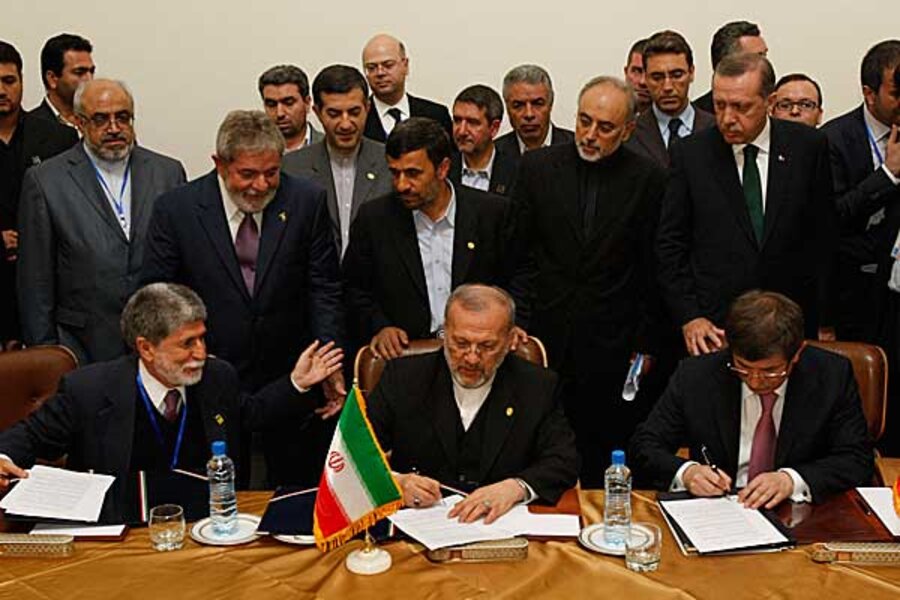Iran nuclear fuel swap: Who can make the fuel rods?
Loading...
| Istanbul, Turkey
The Iran nuclear fuel swap deal reached today with the help of Turkey and Brazil was billed as a “confidence-building” step for Iran to demonstrate that its nuclear ambitions are entirely peaceful. Under the agreement, Iran would ship much of its low-enriched uranium to Turkey to exchange for fuel rods made abroad that would power its small reactor in Tehran.
Iran announced with great fanfare in February that it had begun to boost its homemade uranium enrichment levels from 3.5 percent to 20 percent – to make for itself the nuclear fuel it needs for a small research reactor in Tehran.
But nuclear specialists also say that the fuel Iran needs to power its reactor – which produces medical isotopes, and was supplied by the United States in 1967 – is a time-consuming and complicated process currently beyond Iran’s capability.
Argentina in the early 1990s converted Iran’s reactor from one that used highly enriched uranium – 93 percent, suitable for making weapons – into one that required the 20 percent fuel. They also provided 120 kg of the fuel.
“That fuel provided by Argentina has been eked out over the last 17 years, and it's now run out – that’s why Iran needs new fuel,” says John Large, a London-based independent nuclear expert. “Not only does it need a new fuel core – about 30 to 40 kg to put in the reactor straight away – but it needs about … 10 kg … per year.”
Russia, France likely to provide fuel rods
The deal brokered by Brazil and Turkey with Iran will be sent for approval this week to the United Nation’s nuclear watchdog, the International Atomic Energy Agency (IAEA).
Russia is likely to be called upon to enrich uranium to 20 percent – a process that some estimate would take six to nine months – and France will be asked to fabricate the fuel rods.
Those are the roles those countries were ready to play in October. France and Argentina are two of just a handful of countries that can make the necessary fuel rods today.
Why making the fuel rods is hard
Iran could probably handle several steps of the fuel-making process itself, says Mr. Large, from the actual enrichment to 20 percent, to even converting that material to uranium metal. But making the actual fuel rod is far from easy.
“The difficulty is dispersing the uranium very evenly through the fuel matrix,” says Large. “If you’ve got ‘clumps’ of uranium – say about ten-millionths of a meter in diameter, tiny but nevertheless a ‘clump’” – they form gases that can endanger the fuel.
“The uranium has to be finely dispersed, and that’s quite technically difficult,” says Large of the molecular structure. “When [trying] to fabricate oxide fuel at 3.5 percent, the problem isn’t that great. When you actually get up to 20 percent, the problem becomes very significant – and that may well be beyond [Iran’s] present technology.”
Iran would be unable to convert fuel rods to weapons-grade uranium
Also thought to be beyond Iran’s current ability would be to take the 120 kg of fuel rods it would receive within the next year – if Monday’s deal is implemented – and convert them back to uranium suitable for further enrichment, as needed for weapons.
Included in the fuel may be a material like Gadolinium, which slows the burn speed of the reactor fuel.
“If you are clever and chemically lock-in the Gadolinium, it means Iran wouldn’t have the technology to actually convert it back to 20 percent pure uranium and push that through the [enrichment centrifuges] again,” says Large. “The way you lock them out is simply by using a little bit more advanced technology than they presently have.”
Related Stories:





